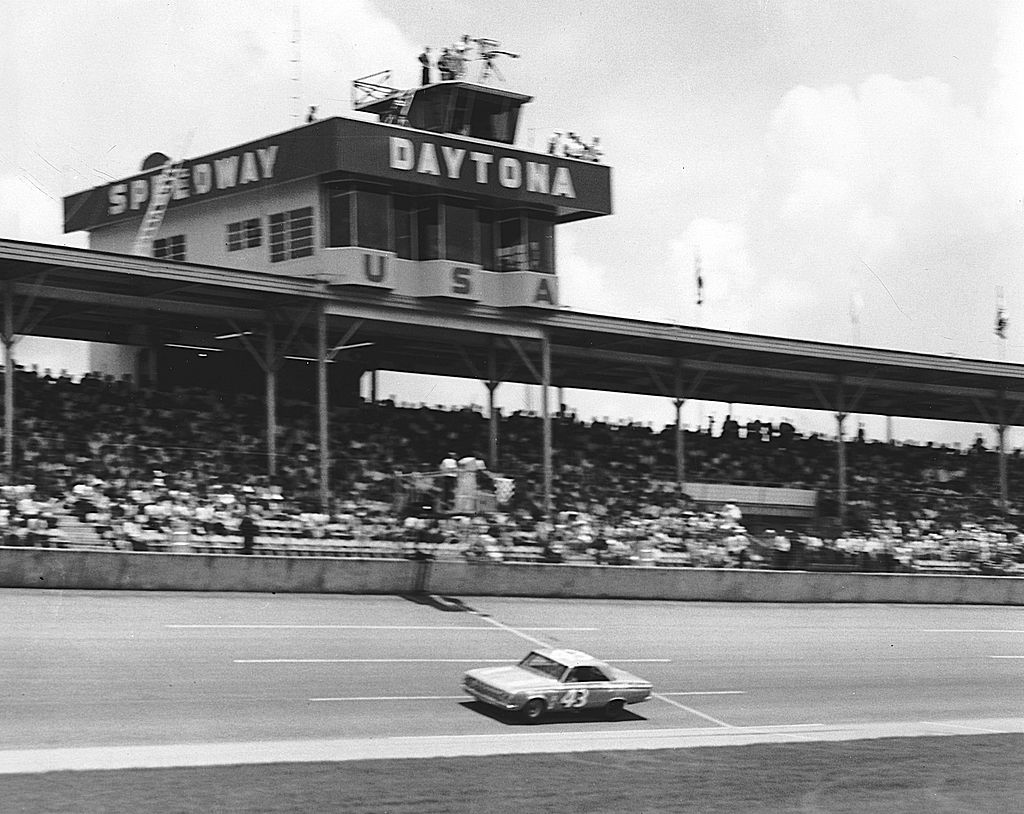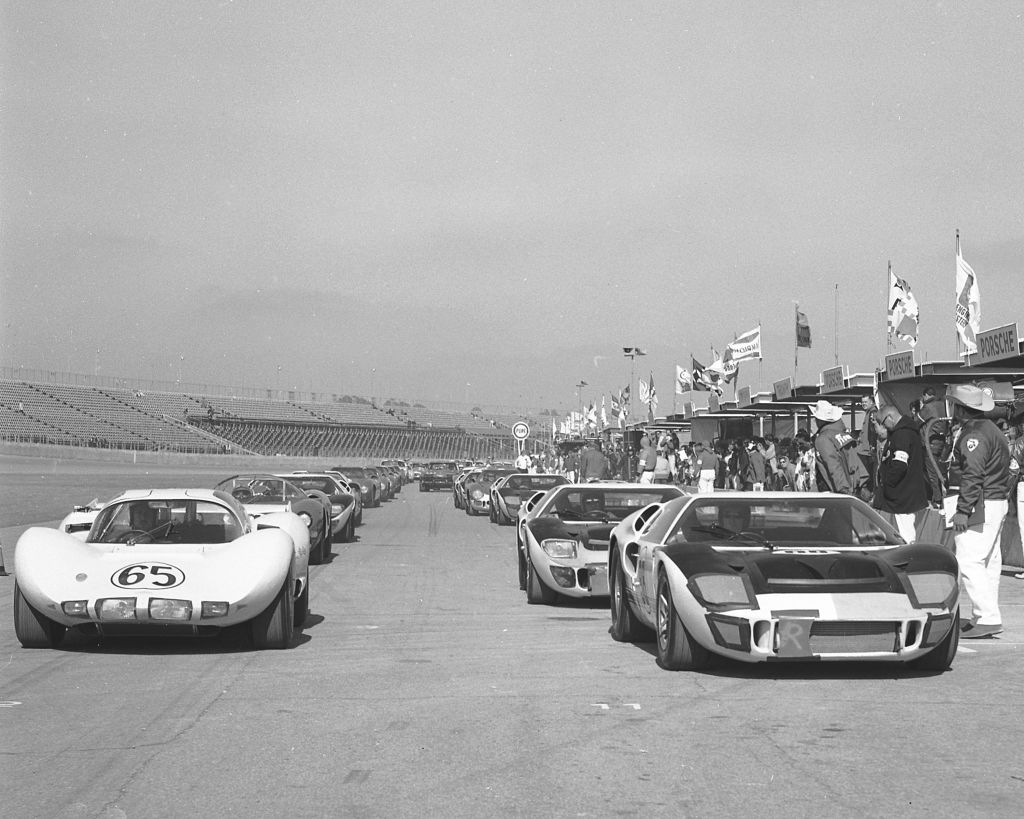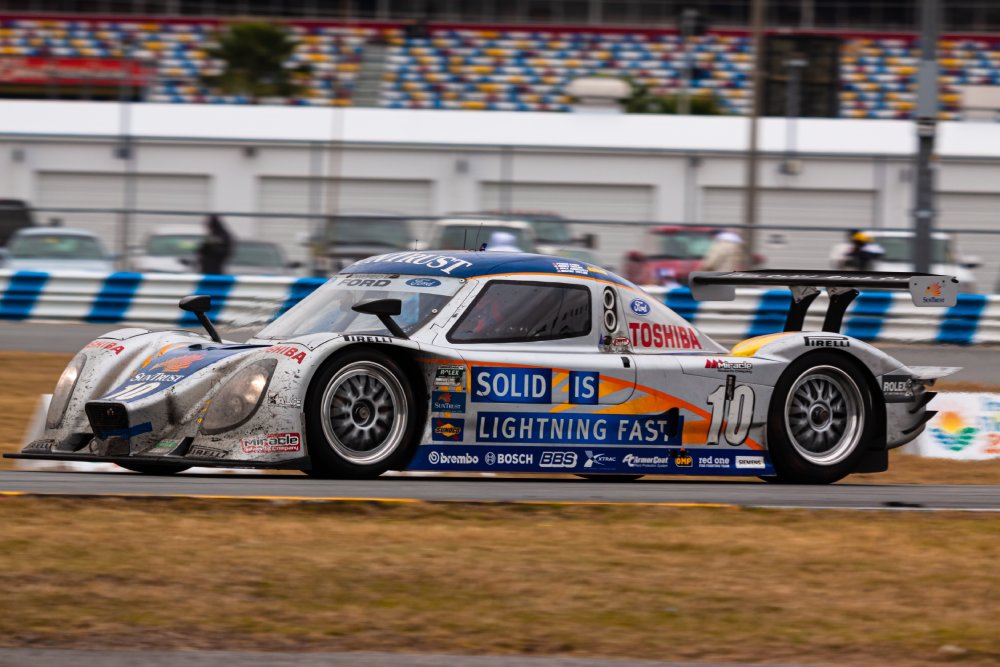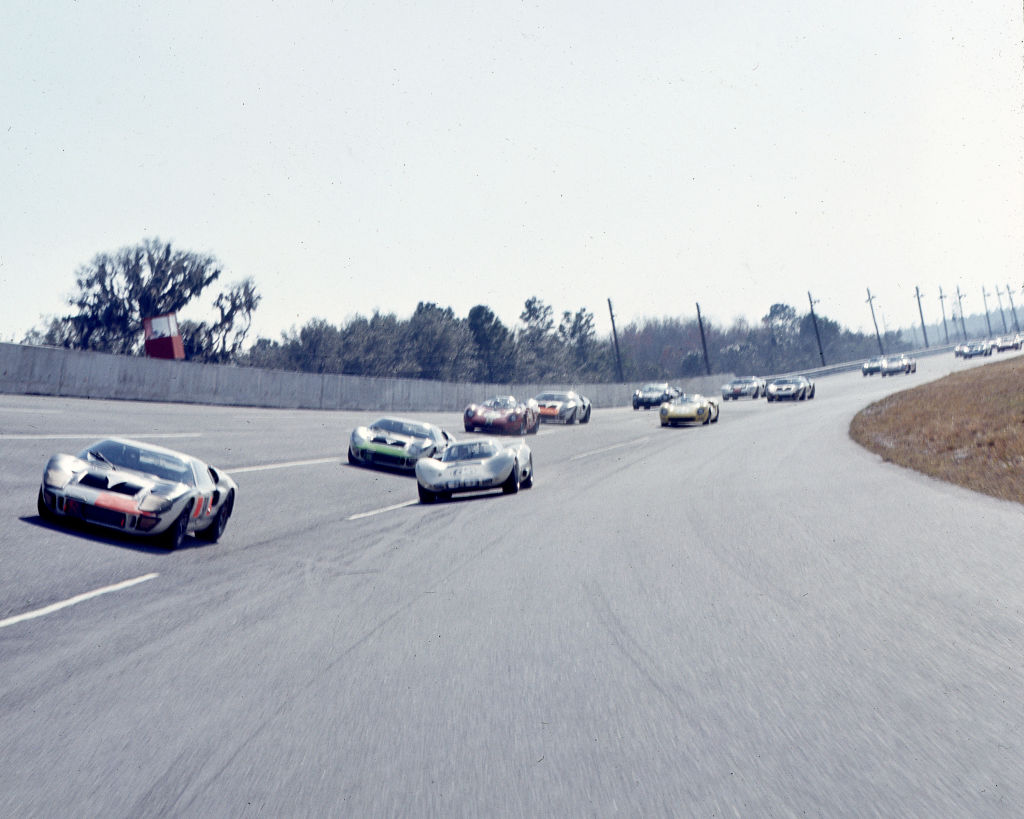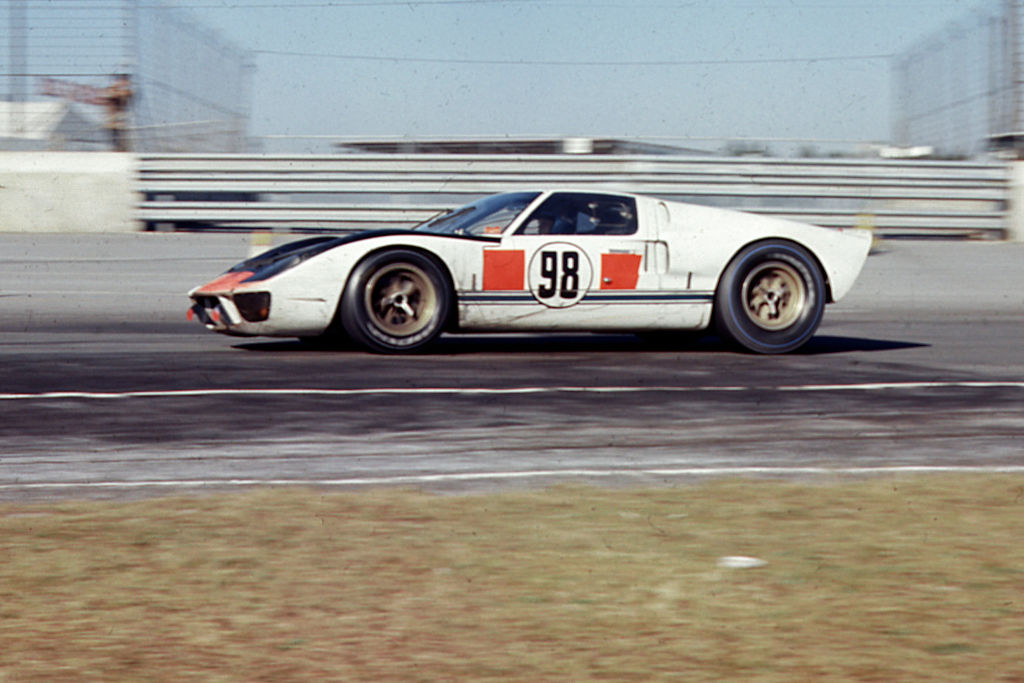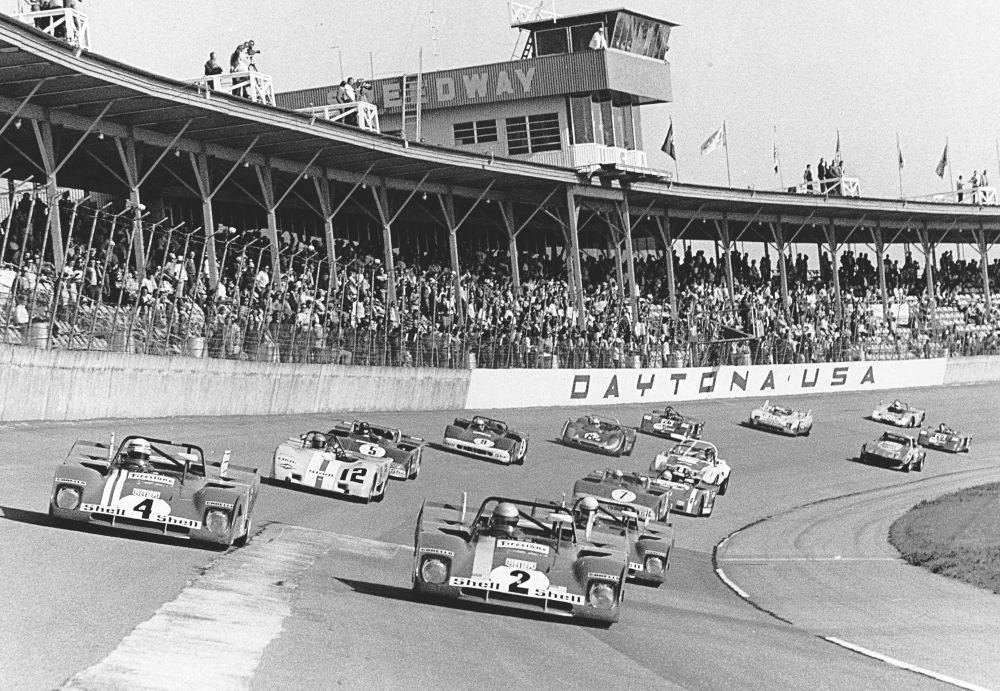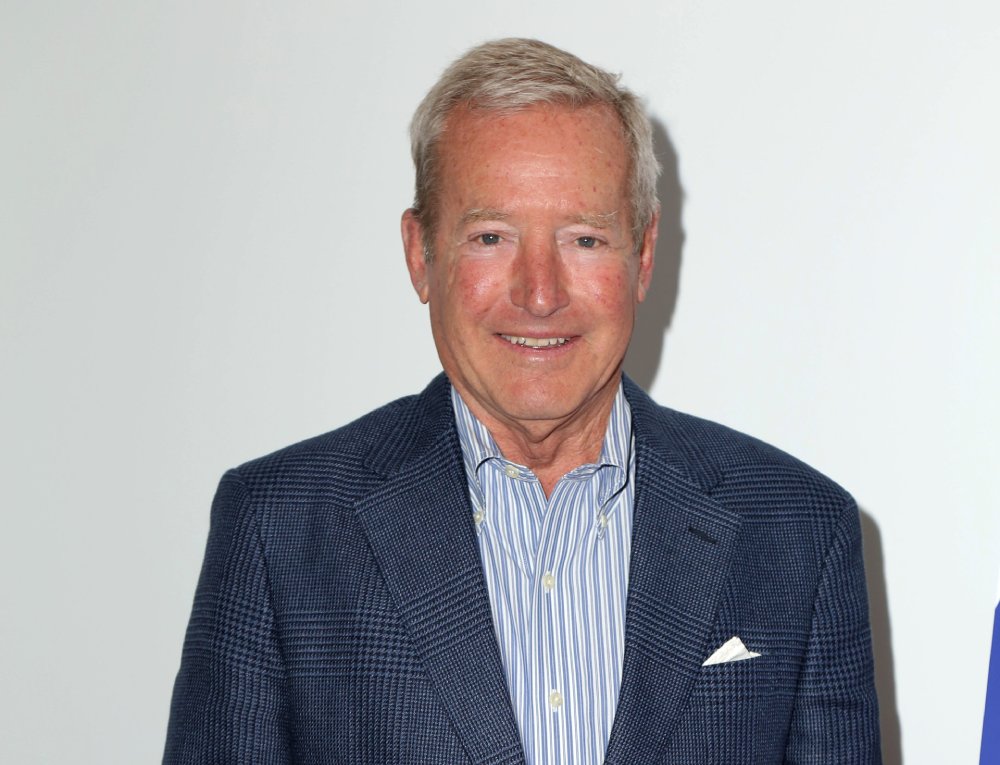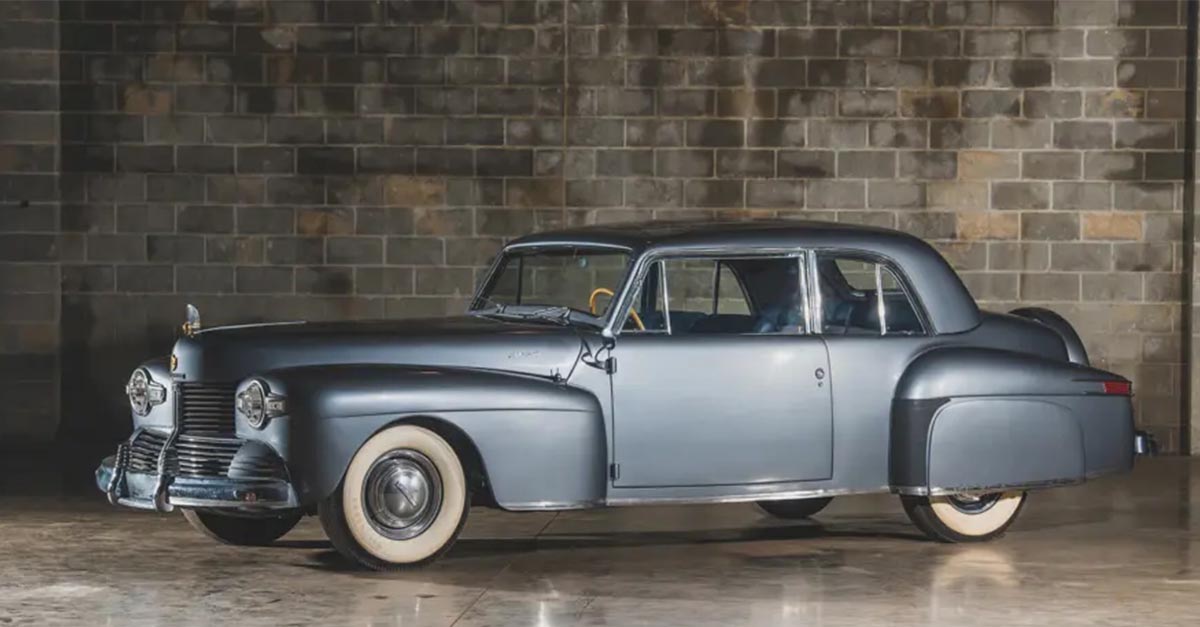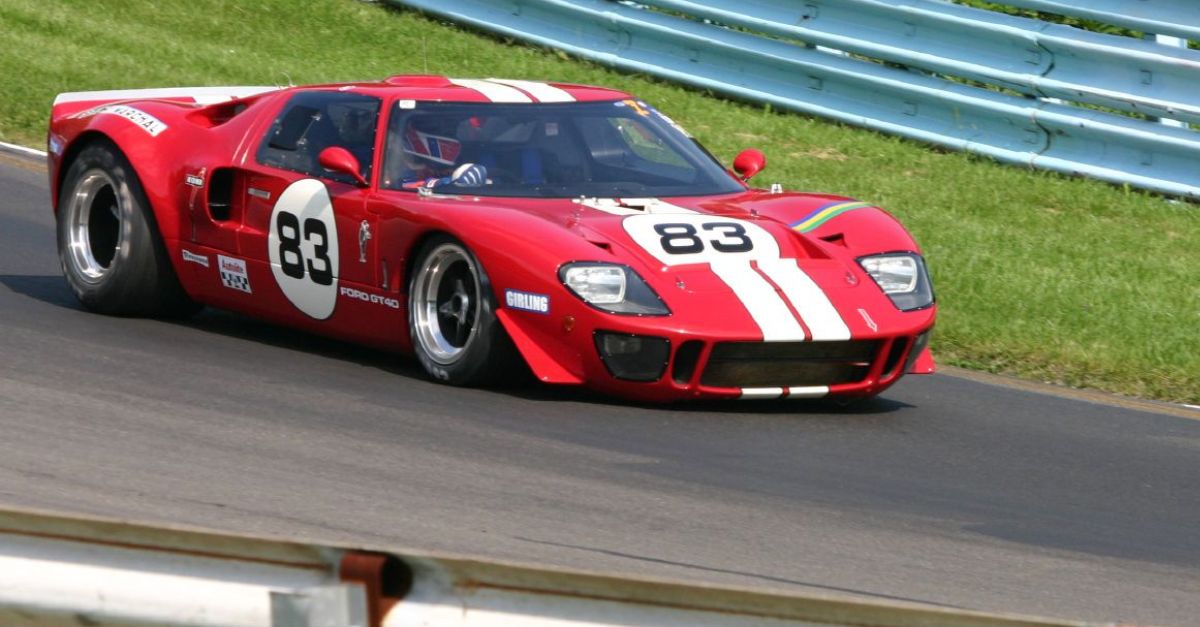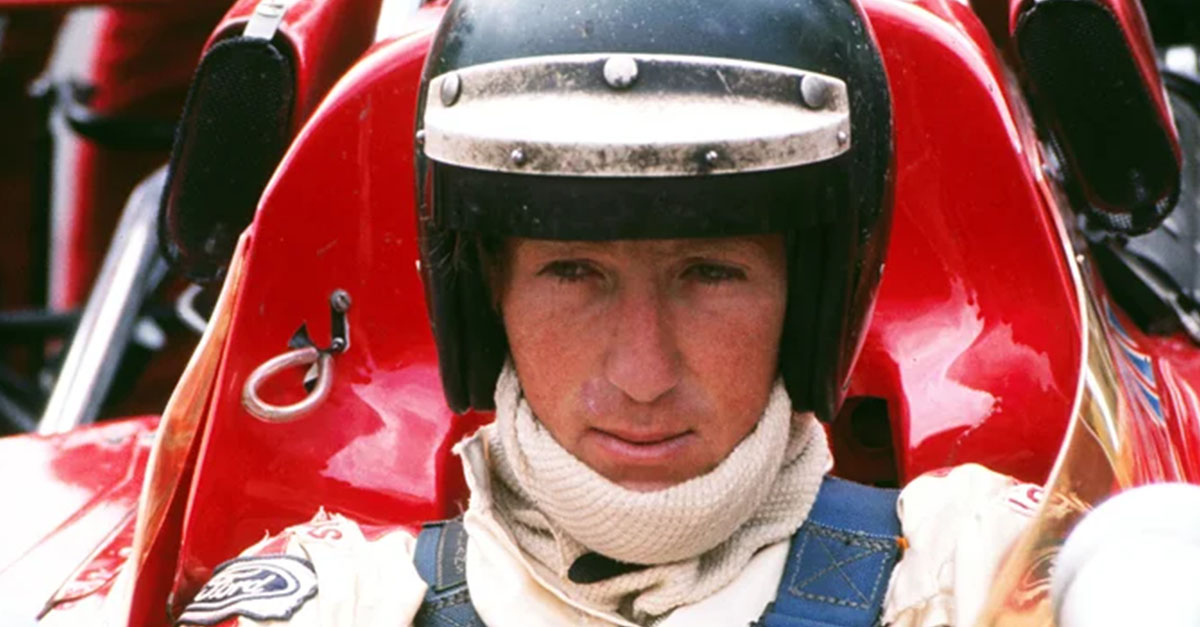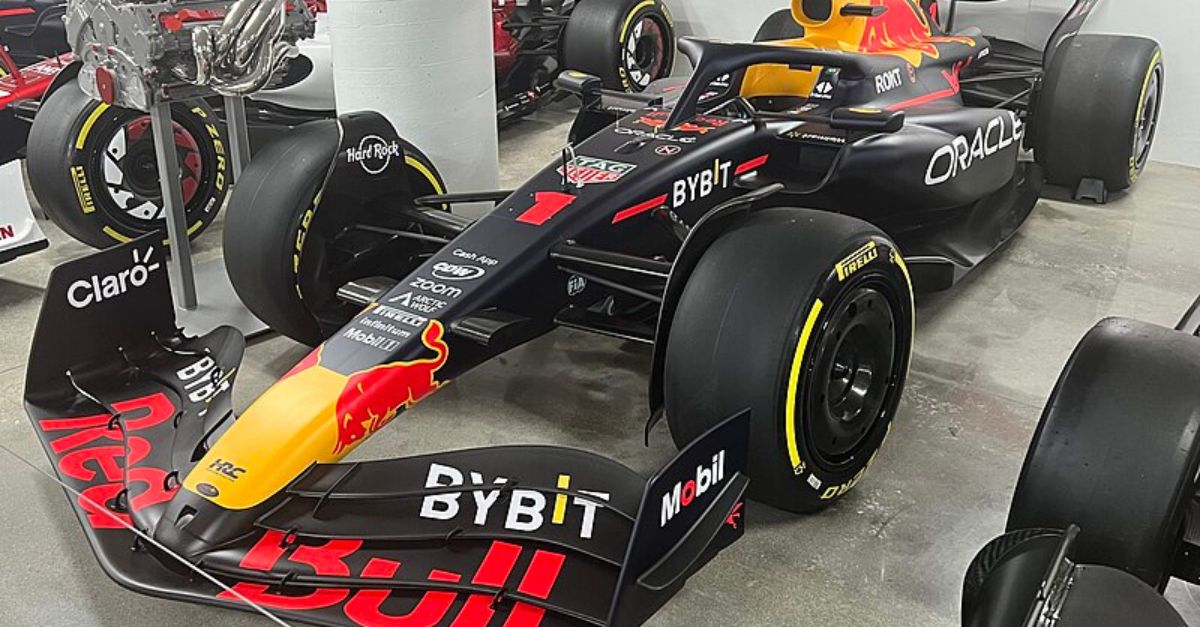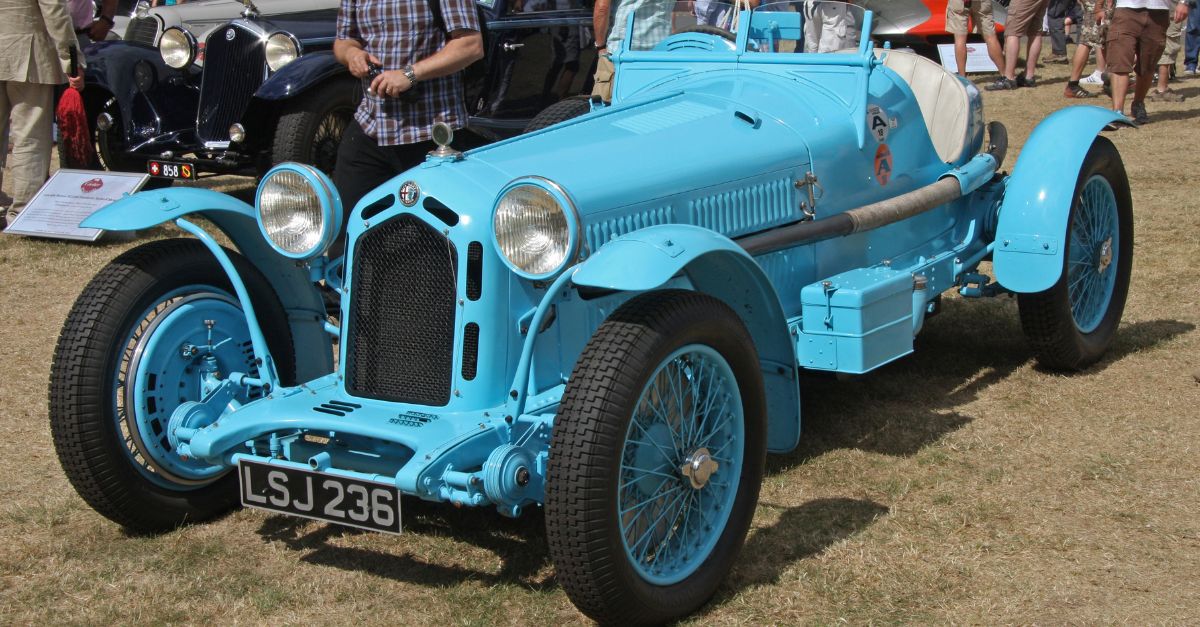An American Spin On The Infamous Le Mans Race
Racing enthusiasts have likely heard of the 24 Hours of Le Mans race, won by the car that can cover the greatest distance in 24 hours, racing around the Circuit de la Sarthe in Le Mans, France. But the oldest active endurance race event in the world has some stiff competition in the United States: The 24 Hours Of Daytona.
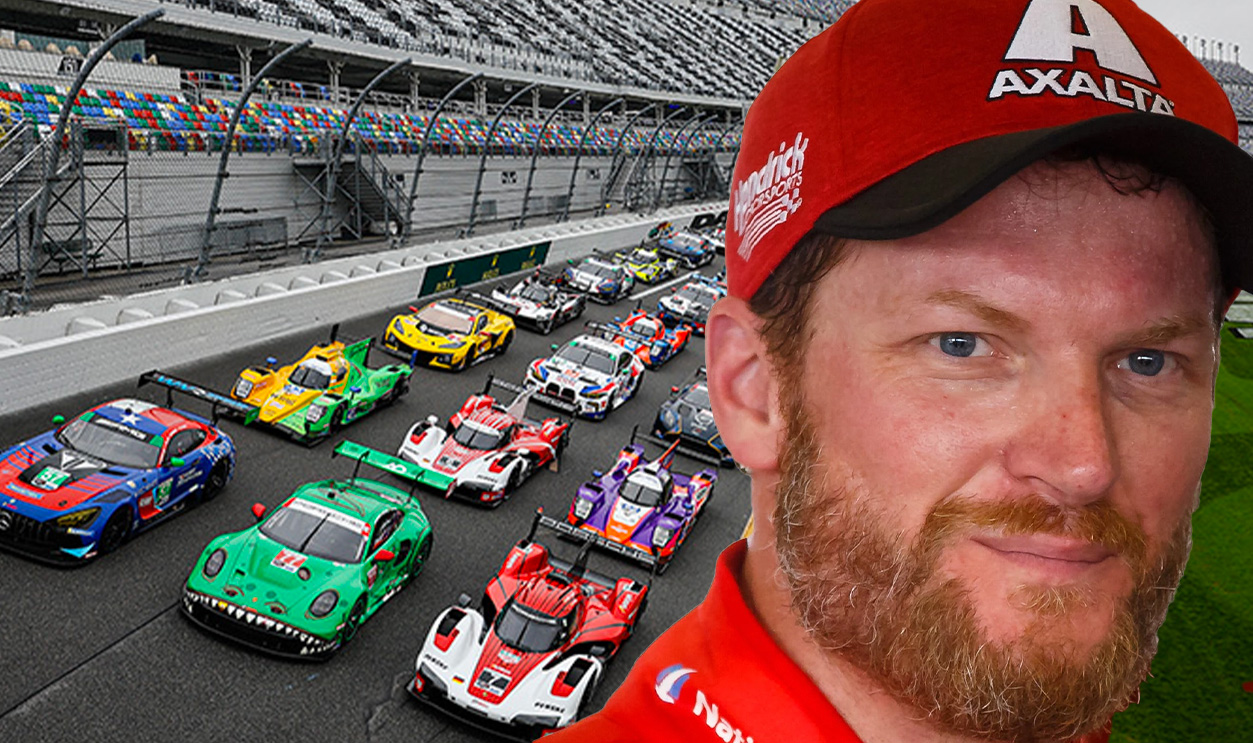
A Brief History Of Its Predecessor
Running annually since 1923, the 24 Hours At Le Mans race was conceived by the head of the Automobile Club de France, Georges Durand. He suggested a brand-new race format: a 24-hour race around a 19-mile track, where competitors could showcase their car's worth to potential customers.
 OldLion, CC BY-SA 4.0, Wikimedia Commons
OldLion, CC BY-SA 4.0, Wikimedia Commons
Ford Gears Up To Win Le Mans
As the decades of Le Mans passed without a winner, Ford decided to try and compete against its European manufacturing compatriots and build a supercar to beat their main racing rival, Ferrari. Their answer was to design a bold, new car: the Ford GT40.
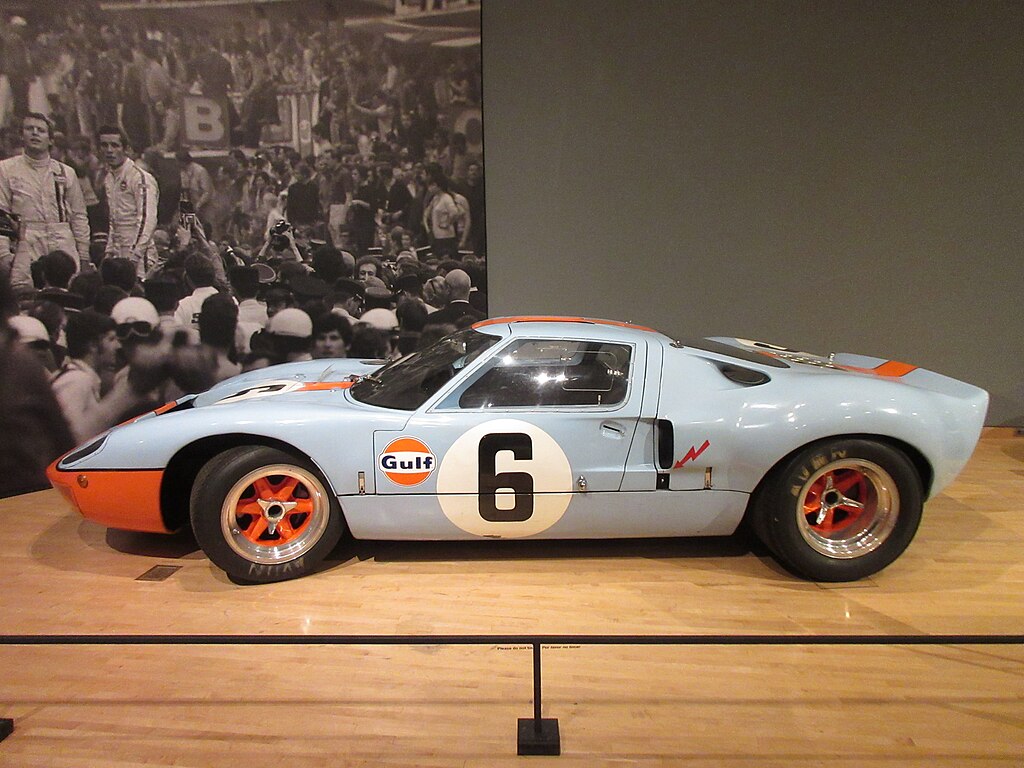 zombieite, CC BY 2.0, Wikimedia Commons
zombieite, CC BY 2.0, Wikimedia Commons
The GT40 Conquers Ferrari
As told in Ford V Ferrari, the Ford GT40, Ford's brand-new supercar was unleashed at the 1966 Le Mans race. A 7.0L V8 engine with a five-speed manual transmission produced 485 hp and gave the GT40 a staggering top speed (for the 1960s) of 185 mph. Ford won the 1966 24 Hours At Le Mans Race, and then won three subsequent years in a row.
 Calreyn88, CC BY-SA 4.0, Wikimedia Commons
Calreyn88, CC BY-SA 4.0, Wikimedia Commons
Prequel To The 24-Hour Race
In 1962, the Daytona Continental was introduced. Packaged as a three-hour, 621-mile sports car race, points won by manufacturers would count towards the FIA's newly-created International Championship For GT Manufacturers. All manufacturers that produced "grand touring" (GT) cars could enter. This is widely viewed as the prequel to what would become the 24 Hours of Daytona race.
Race Distance Expanded
In 1964, the race distance was expanded to cover a distance of 1,240 miles, doubling that of classic European races, but still behind the pecking order of the 24 Hours of Le Mans race.
Different Conditions To Le Mans
Any racers who wished to enter the newly-conceived 24 Hours Of Daytona were in for a shock: It was surprisingly brutal. Floridian February weather was nothing to scoff at: damp and cold, it was a far cry from Le Mans, a serene drive through the French countryside. Nevertheless, the first 24 Hours of Daytona race was scheduled for February 5, 1966.
Race Conducted Over A Closed Course
Unlike the serene speeding through the French countryside, the 24 Hours Of Daytona is held over a closed course, rather than the public roads of Le Mans, France.
Shorter Overall Distance
Because of the layout of the Daytona course, cars cannot achieve as high speeds as they could in Le Mans, meaning that drivers of Le Mans, on average, cover more ground than their American compatriots. In 2013, Le Mans drivers covered 3,362 miles, whereas Daytona racers in a 2010 race could only record 2,965 miles over the same time period.
The Beginning Of 24 Hours Of Daytona
A winter day dawned at Daytona Beach, Florida for the inaugural 24 Hours Of Daytona race. Among the racers was the British racing legend Ken Miles, who many years earlier had been responsible for helping to build the GT40 that he would later go on to win Le Mans with. He was a firm favorite among the fans.
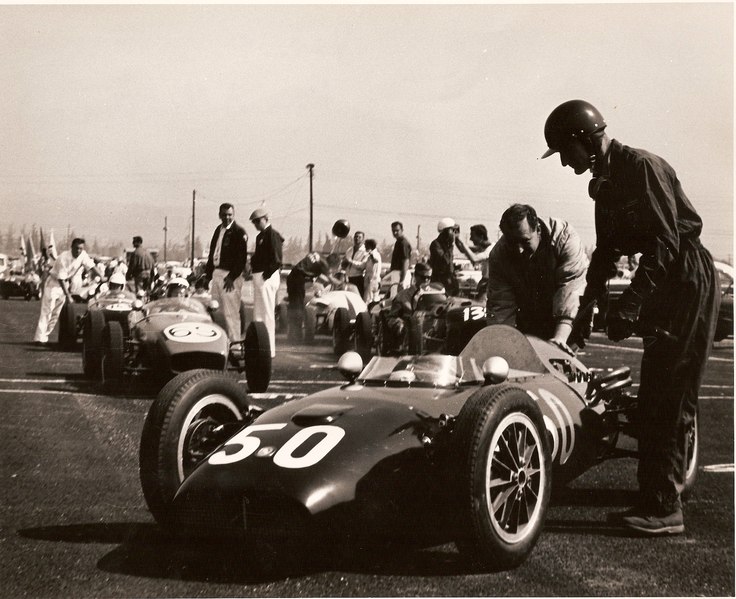 Raycrosthwaite, CC BY-SA 3.0, Wikimedia Commons
Raycrosthwaite, CC BY-SA 3.0, Wikimedia Commons
Spying In 1966
While automotive espionage isn't exactly unheard of today, it's much more regulated than it was in the mid-1960s. In 1966, Ferrari had sent out his team to test the cars on the track at Daytona. Despite reserving track time and the track being closed to the public, Ford workers and members of the general public, with their long-lens cameras and stopwatches, spied on Ferrari and subsequently gave the data to Ford executives.
Ford's New GT40 Mark III Fails Spectacularly On Testing
After Enzo had gone home, Ford took to the track to test the new Mark III version of the Ford GT40. Unfortunately for Henry Ford, the Mark III proved to be an abysmal failure: cracking wheels, oversteering and a catastrophic chassis failure left Ford with no choice but to enter the 1967 race with the heralded GT40 Mk II.
 TaurusEmerald, CC BY-SA 4.0, Wikimedia Commons
TaurusEmerald, CC BY-SA 4.0, Wikimedia Commons
The Bitter Cold Bites
Florida in the winter is somewhat damp and cold, with a wind whipping through the area. Pit lanes were filled with shack-like structures covered in plastic tarp to keep the wind down. They glowed at night from the light inside. Pit teams struggled to stay awake overnight.
 Christopher Ziemnowicz, Wikimedia Commons
Christopher Ziemnowicz, Wikimedia Commons
Stock Cars V Sports Cars
Because the 24 Hours Of Daytona race was brand-new, you could be forgiven for not being an immediate fan, especially if you were used to the short stock car races of NASCAR. Although there were a few spectators during the first 24 Hours Of Daytona race, by nightfall, except for a few hardcore fans braving the cold, most had filtered out. There was little interest in sports cars on a NASCAR track.
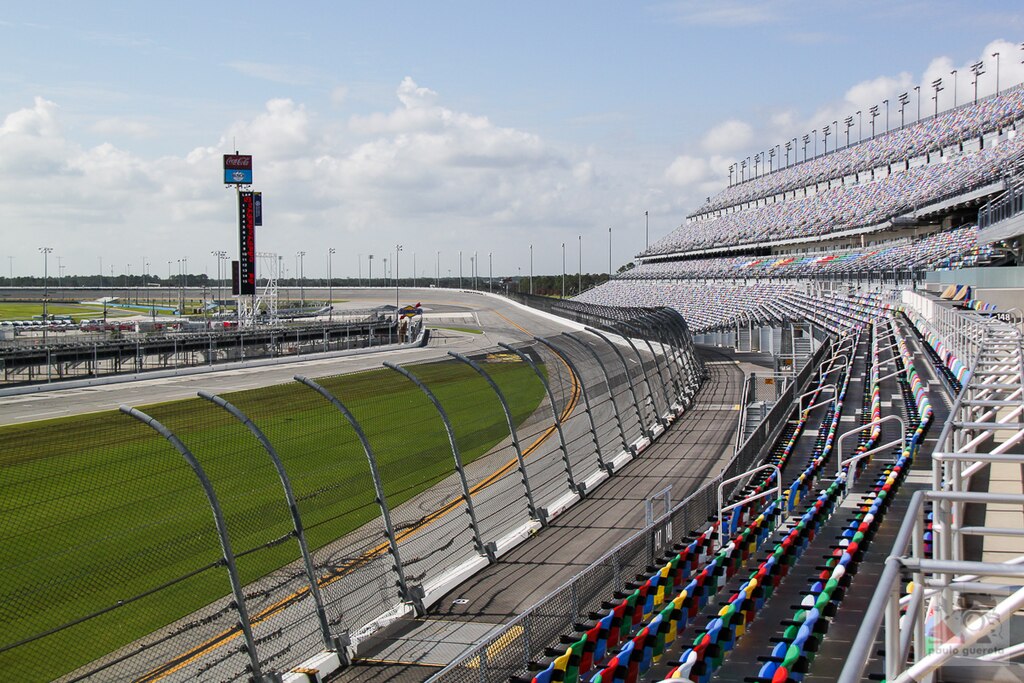 Paulo Guereta, CC BY 2.0, Wikimedia Commons
Paulo Guereta, CC BY 2.0, Wikimedia Commons
The Failed Ferris Wheel Experiment Of The 1966 Race
Seeking to invoke the excitement of younger fans, the organizers of the 24 Hours of Daytona race installed a ferris wheel on the racing grounds. Unfortunately, the wheel's neon yellow tubes burned out part-way through the night and thus, it was rendered inoperable.
 United Autosports, CC BY-SA 2.0, Wikimedia Commons
United Autosports, CC BY-SA 2.0, Wikimedia Commons
More Drivers Than Spectators
There were "growing pains" aplenty at Daytona during the early years, with a joke going around that there were "more drivers than spectators". Among the drivers were Bruce McLaren (of McLaren cars), Lucien Bianchi (great-uncle of Jules Bianchi), and other future Formula One racers.
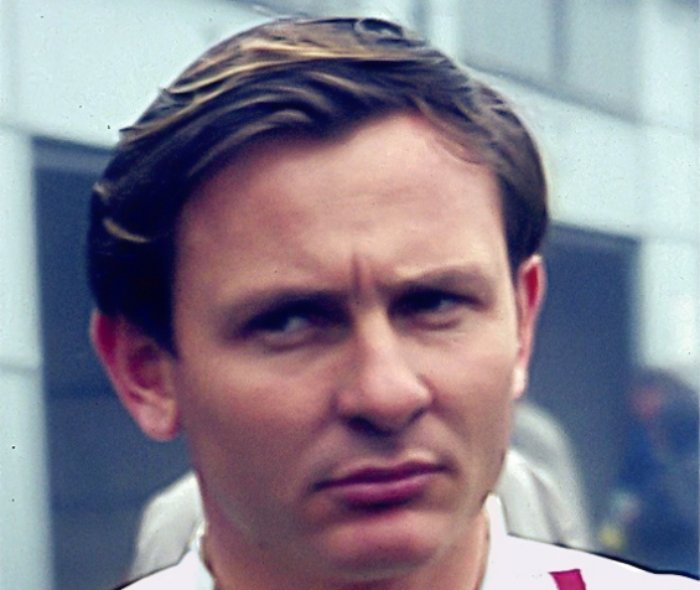 Lothar Spurzem, CC BY-SA 2.0, Wikimedia Commons
Lothar Spurzem, CC BY-SA 2.0, Wikimedia Commons
The First Women Make History At Daytona
Unlike their French counterparts, which at the time barred women from competing, Daytona's inaugural race saw six women enter the race, with a three-woman American team: Suzy Dietrich, Janet Guthrie, and Donna-Mae Mims become the first women to enter and finish an international-standard 24-hour race.
 Tim O'Brien, Wikimedia Commons
Tim O'Brien, Wikimedia Commons
Ken Miles Wins Inaugural Race
As it happened, the favorite to win the inaugural 24 Hours Of Daytona ended up winning the race, sweeping to victory in his 1966 Ford GT40 Mk II, the same car that would go on to win Le Mans. This upset Enzo Ferrari greatly, who vowed revenge.
Ford Usurps Ferrari As King Of The Racing World
With the ever-bitter rivalry between Ford and Ferrari reaching peak heat, Ford's sweeping victory at both Daytona and Le Mans meant they usurped Ferrari as the kings of endurance racing
 Sicnag, CC BY 2.0, Wikimedia Commons
Sicnag, CC BY 2.0, Wikimedia Commons
Enzo Plots His Revenge
One year on from a humiliating loss to Ford at the inaugural Daytona race, Enzo Ferrari plotted his revenge: three new cars to steal Ford's thunder and take home victory at the 24 Hours Of Daytona race. The three cars were the Ferrari 330 P3/4, the 330 P4,and the 412 P. These three cars completed a remarkable 1-2-3 finish at the 24 Hours of Daytona race, giving Ferrari plaudits for the year.
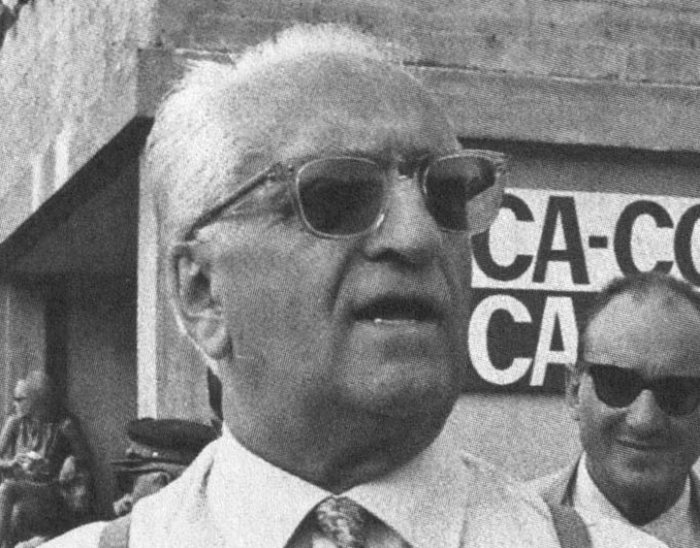 Rainer W. Schlegelmilch, Wikimedia Commons
Rainer W. Schlegelmilch, Wikimedia Commons
Ferrari's Winning Car: The New 330 P4
In 1966, Ferrari's brand-new 330 P4 had won La Monza, an (at the time) 620-mile circuit north of Milan, Italy. The 1967 winner was one of only four cars ever produced, fitted with a V12 engine with a three-valve cylinder head modeled after the car that had won the Italian Grand Prix that year. The 330 P4 had a staggering output of 450 hp.
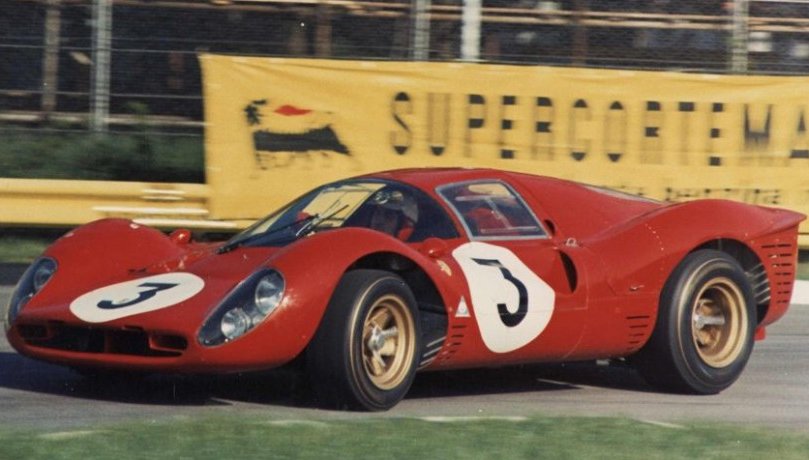 Unknown Author, Wikimedia Commons
Unknown Author, Wikimedia Commons
The Other Winner: The 412 P
Ferrari's other victorious car was the Ferrari 412 P, powered by a Colombo V12 engine, producing 414 hp through a five-speed manual transmission. Ferrari's pitting of three cars against the Ford GT40 would ensure they didn't lose this time.
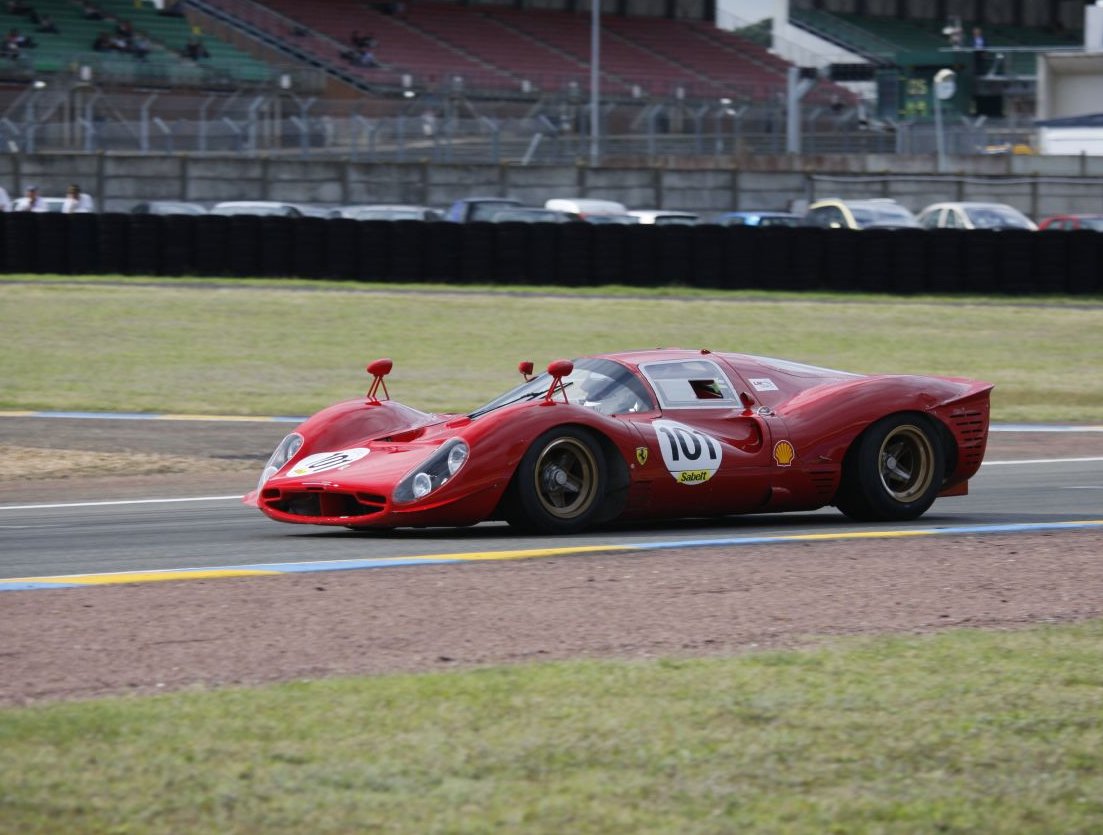 asopuma, CC BY 2.0, Wikimedia Commons
asopuma, CC BY 2.0, Wikimedia Commons
A Picture-Perfect Finish
With the end in clear sight, Ferrari drivers were given the instruction to all cross the finish line at the same time, to counter the Ford's photo finish from 1966, where the three cars finished just behind each other in first, second, and third. It was another attempt by Enzo Ferrari to out-ego Henry Ford.
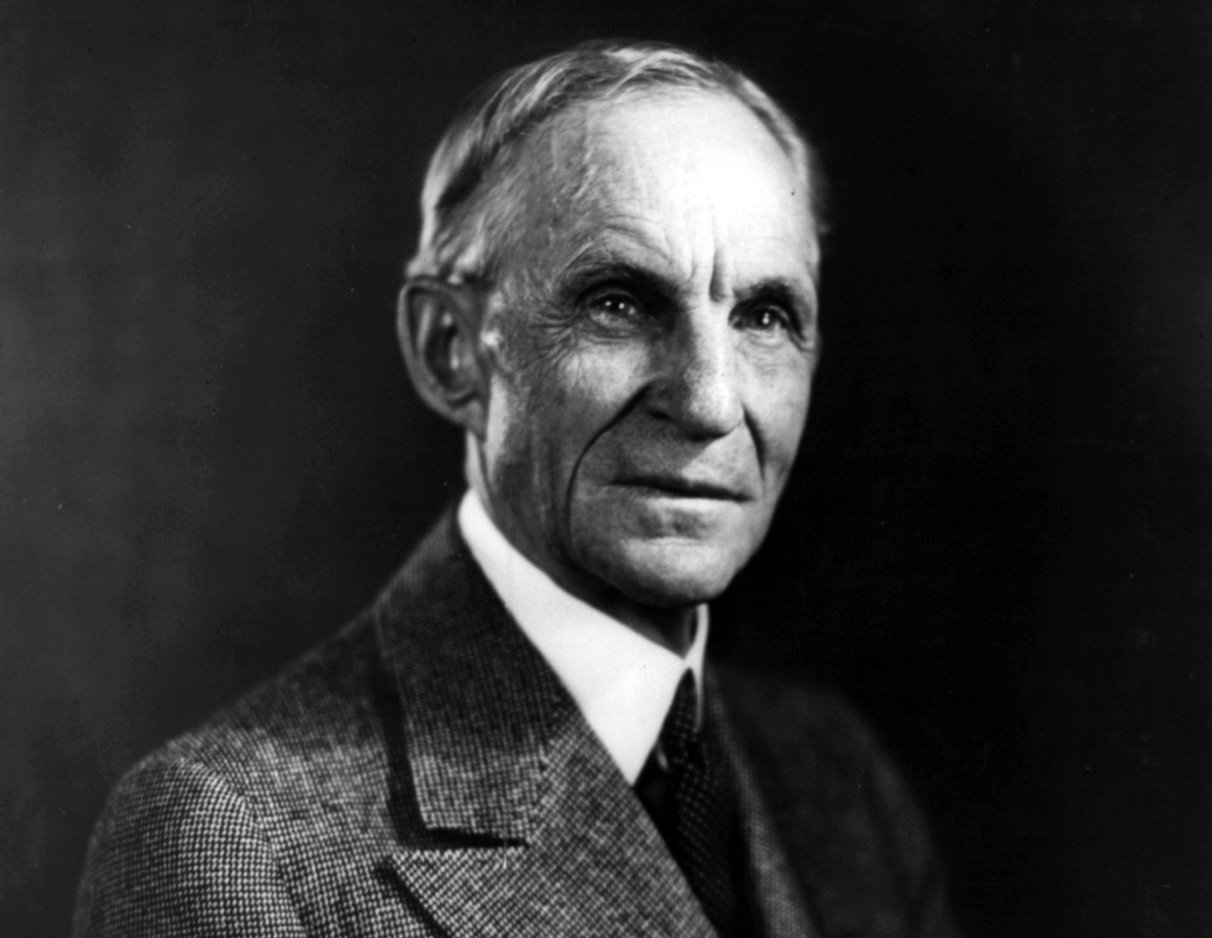 Unknown Author, Wikimedia Commons
Unknown Author, Wikimedia Commons
Ferrari's Short-Lived Time Atop American Motorsports
While Ferrari was doing his victory laps over Ford throughout the early part of 1967, Ford and the remarkable Ford GT40 was once again victorious at the 1967 Le Mans race.
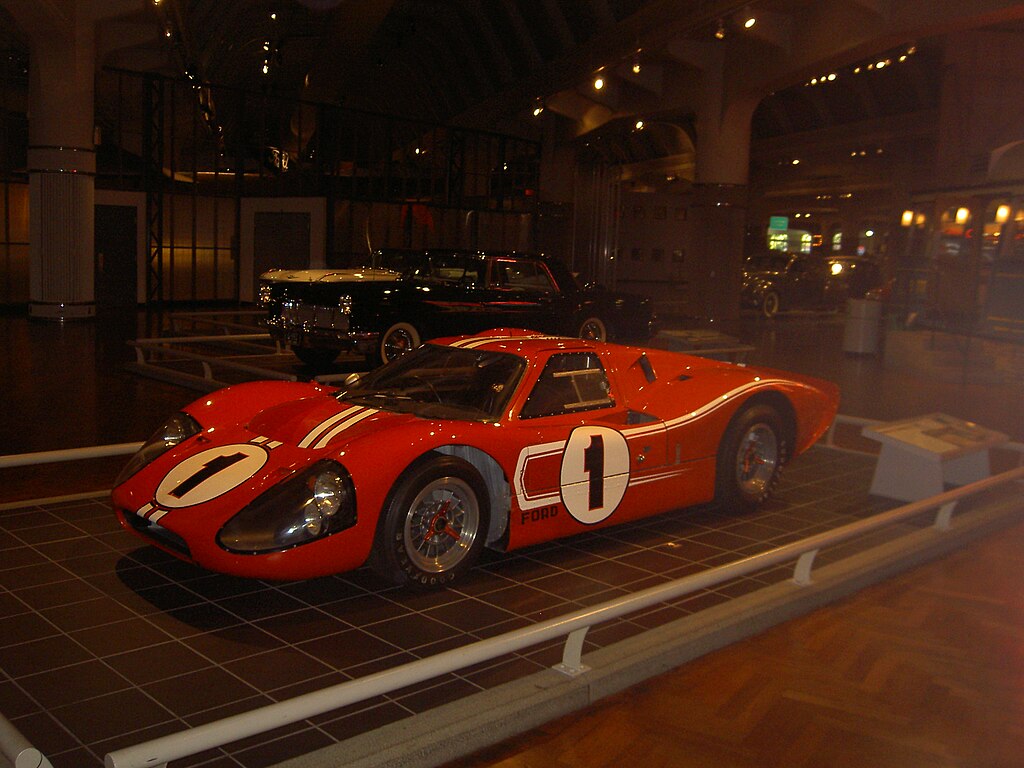 Sandypineman, Wikimedia Commons
Sandypineman, Wikimedia Commons
Porsche Enter The Fray At Daytona 1968
In 1968, Porsche would have something to say about the heated rivalry between Ford and Ferrari: It was having none of it. As the race wore on, Porsche's various competitors would crash or retire due to mechanical failure, leaving Porsche to put 5 drivers out of 8 on the podium. A staggering defeat for both Ford and Ferrari.
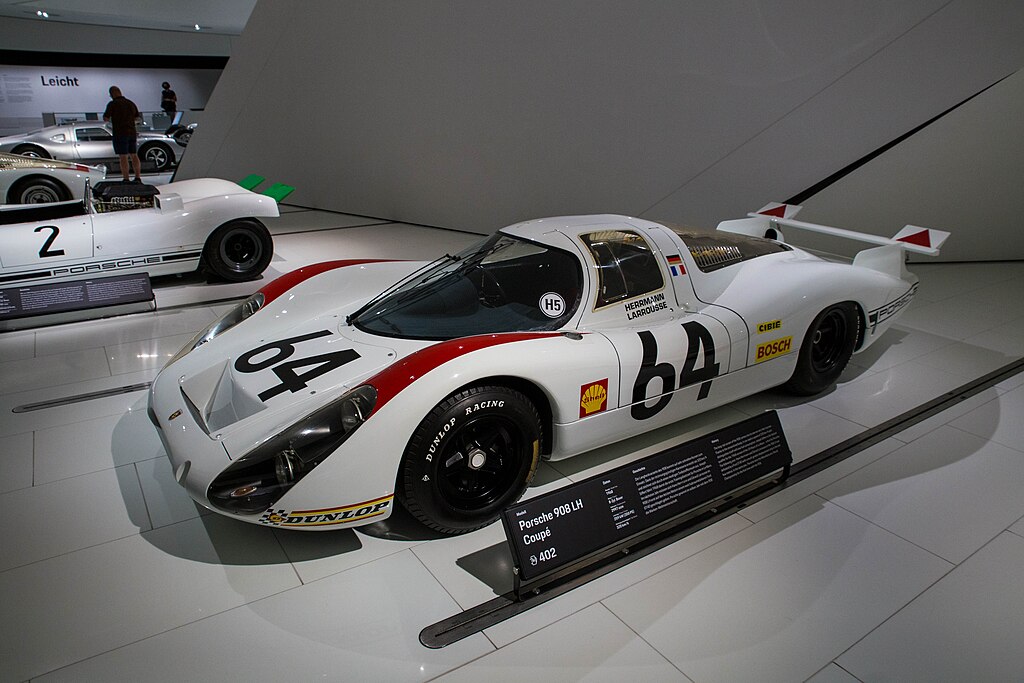 Clemens Vasters, CC BY 2.0, Wikimedia Commons
Clemens Vasters, CC BY 2.0, Wikimedia Commons
Still In It's Infancy
One year later in 1969, Lola Cars Limited finished 1-2, with two American drivers: Chuck Parsons and Mark Donohue. There were just a few spectators in the crowd. Motor Sport magazine said at the time, "The Daytona 24-Hour race draws a very small crowd, as can be seen from the empty stands in the background".
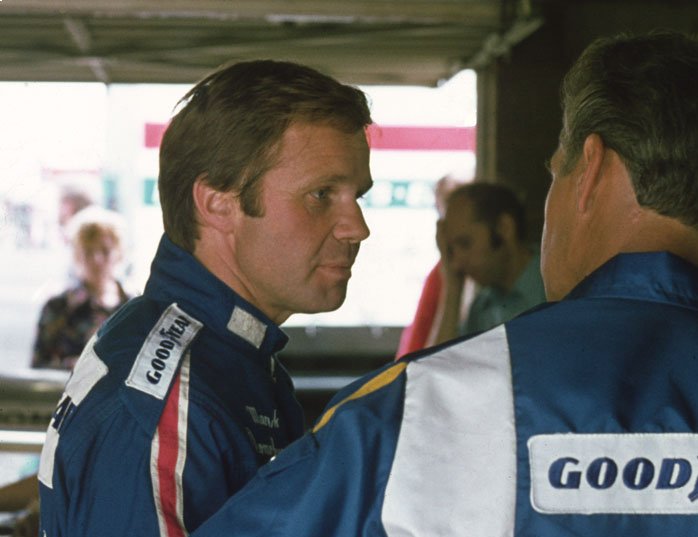 Gillfoto, CC BY-SA 3.0, Wikimedia Commons
Gillfoto, CC BY-SA 3.0, Wikimedia Commons
The 1972 Oil Crisis Bites Racing Hard
The oil crisis of 1972 caused a huge crunch on fuel prices across the United States, impacting particularly fuel-heavy industries like car racing. To combat this, the 24 Hours Of Daytona was shortened to just six hours. Two years later, the event was cancelled altogether as the oil crisis persisted.
Porsche Dominates The Field
Throughout the mid- to late 1970s and the 1980s, Porsche dominated the field at 24 Hours Of Daytona, racking up seven victories in a row between 1976 and 1983, before losing to March Engineering in 1984. They regained the crown in '85 and continued to dominate through the late 1980s.
 Mr.choppers, CC BY-SA 3.0, Wikimedia Commons
Mr.choppers, CC BY-SA 3.0, Wikimedia Commons
New Rules To Improve Affordability
In 2002, the International Motor Sports Association (IMSA) implemented new rules to make racing more affordable, including the introduction of Daytona Prototypes—specially designed race cars with cheaper materials and less technology, to be used during testing phases. These cars began racing in 2003.
Legends Competing At 24 Hours Of Daytona
In attempting to capture the Triple Crown of Motorsport Racing—winning the Indy 500, 24 Hours of Le Mans, and a Formula One Driver's Championship—many Formula One racing legends took part in 24 Hours at Daytona races to warm up for Le Mans. This includes Colombian F1 driver Juan Pablo Montoya, and Mexican F1 driver Pedro Rodriguez, who was victorious four times, the second-highest number of wins by any racer in history.
 Bruce Alan Bennett, Shutterstock
Bruce Alan Bennett, Shutterstock
The Most Successful Racing Teams At Daytona
Porsche is the most successful racing team in the history of 24 Hours Of Daytona, having won 20 races, with their last victory coming this year and also winning 2024's event. They're second only to Riley Technologies, with 10 wins. Surprisingly, Italian giant Ferrari only has five race victories.
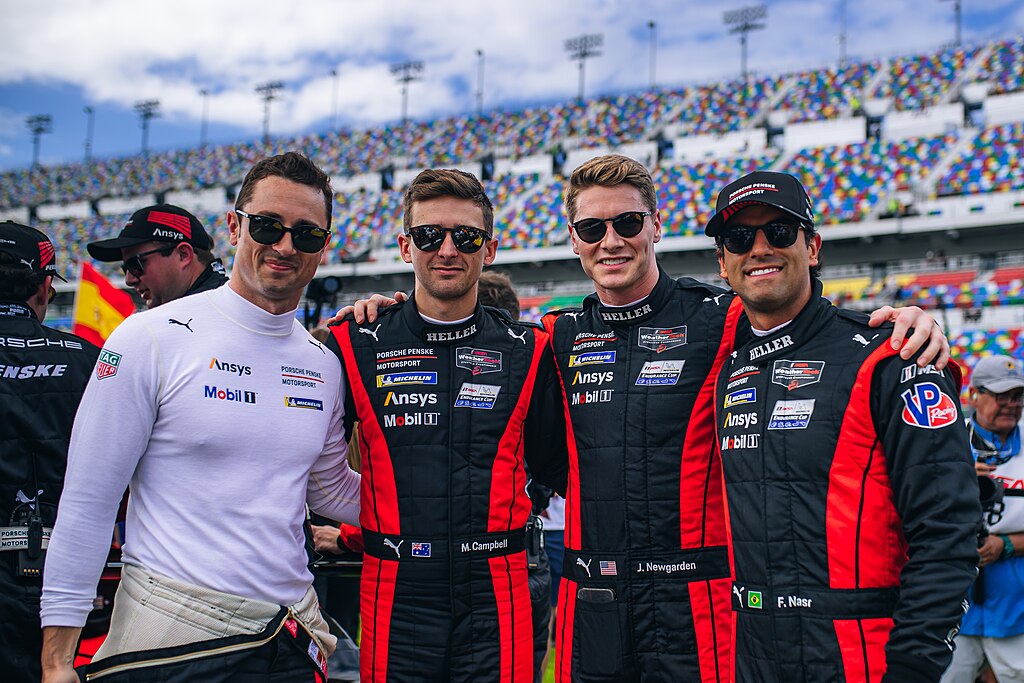 Josefnewgardenracing, CC BY-SA 4.0, Wikimedia Commons
Josefnewgardenracing, CC BY-SA 4.0, Wikimedia Commons
The Most Successful Racer At Daytona
Meanwhile, the most successful racer in the 24 Hours Of Daytona race is Hurley Haywood. He's an American racing driver who's also won the 24 Hours At Le Mans and the 12 Hours of Sebring—completing the informal endurance racing Triple Crown.
The Future Of The 24 Hours Of Daytona
The 24 Hours Of Daytona race has been exploding in popularity in the decades since its inception. That old joke of "more racers than fans" no longer holds merit. The American version of the Le Mans race is here to stay, and it's attracting some huge names from current Formula One drivers, such as Max Verstappen, who recently said that "I'd love to do a Daytona in the future". When are you getting your tickets for the 2026 24 Hours Of Daytona?
You May Also Like:
Dale Earnhardt Jr.'s Greatest NASCAR Moments
An Inside Look At The Porsche 911
Formula One's Last Fatal Crash Was It's Most Tragic
Sources:



